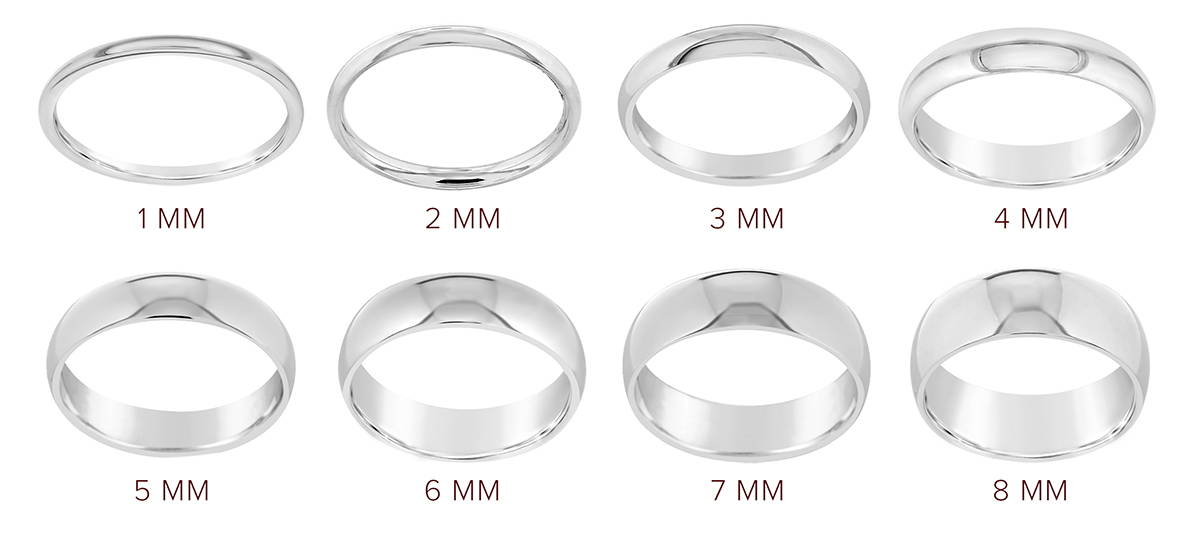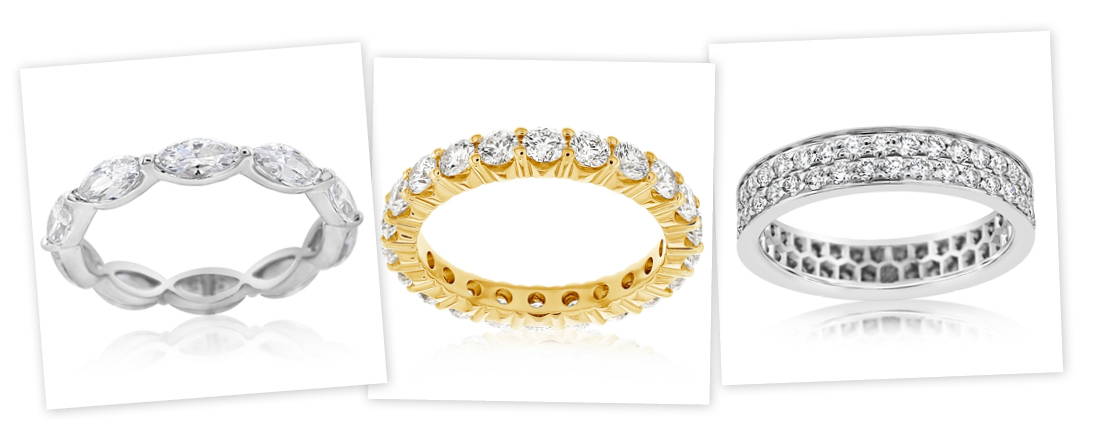
Wedding Band 101
Whether you're in the market for a pair of wedding bands, an anniversary band, or are just looking to add to a stack, learn more about wedding bands and what to look for while you shop. With so many different options, we're here to give a brief overview of what's what in the world of wedding bands.

Wedding Band 101
Whether you're in the market for a pair of wedding bands, an anniversary band, or are just looking to add to a stack, learn more about wedding bands and what to look for while you shop. With so many different options, we're here to give a brief overview of what's what in the world of wedding bands.
Wedding Band Metal Types
Most brides tend to choose the same metal of wedding band used in their engagement rings in order to keep their set cohesive, but we've seen more and more people straying away from this tradition in recent years. White, yellow, and rose gold are the most common metals for wedding bands, but stronger metals such as tungsten and platinum are also popular choices.
Mixed metal wedding bands and ring sets are also gaining more favor in the past few years. Pairing a yellow gold wedding band with a white gold engagement ring, a rose gold engagement ring with a white gold wedding band, and so on isn't as uncommon as it once was.
Another trend that is popping up, especially in men's bands, is having two different metals within the same band. Two-tone wedding bands are becoming increasingly popular as men's bands are becoming more of a fashion statement than they have been in the past.

Wedding Band Settings
Wedding bands have a few different types of settings just like engagement rings do! Here are the six main types of settings you will find in wedding bands and what makes each unique:
- Bar – the stones are held in place with a rectangle of metal in between each stone
- Bead – the stone sits in the metal and is held in place by two or more beads of metal
- Bezel – the metal completely surrounds the stone it holds
- Channel – the stones are held in place by metal borders on each side
- Pavé – small stones grouped so close together that there is very little visible metal
- Prong – each stone is held in place by individual or shared prongs

Stones in Wedding Bands

Band Widths

Styles of Wedding Bands

Classic Bands

Eternity Bands

Contour Bands

